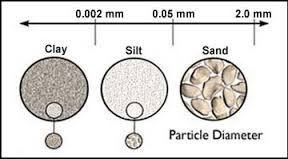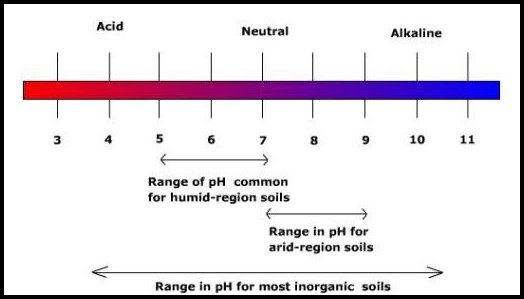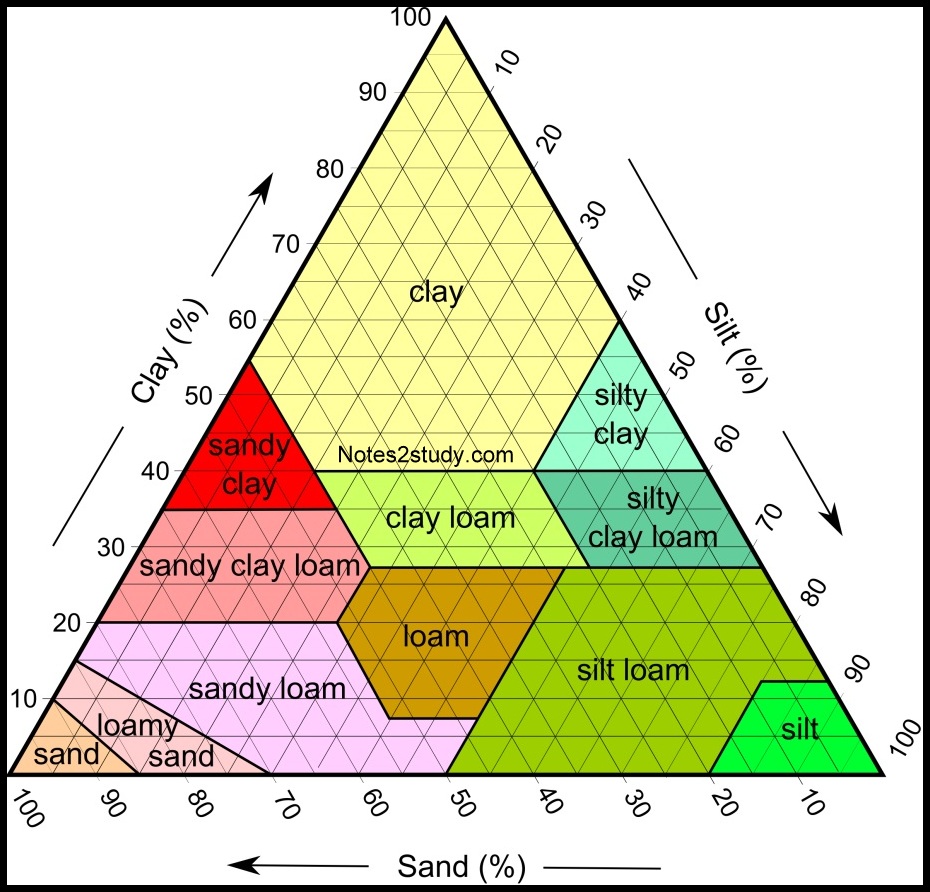Geography
Soil – Soil Profile, Characteristics and Types of Soil in India
Soils of India – Soil Profile & Characteristics
Table of Contents
Importance of Soil
- Soil is essential for life as that they provide the medium for plant growth, habitat for many insects and other organisms, act as a filtration system for surface water, carbon store and maintenance of atmospheric gases.
- They also support buildings and highways and contribute to the economies of our cities.
- g. the rich, deep fertile soils of the Ganga plain especially its delta and the coastal plains of Kerala support a high density of population through agricultural prosperity. On the other hand, the shallow and coarse-grained soils of Telangana and Rajasthan do not provide a base for prosperous agriculture and thus support only a small population.
- At the same time, the soil must not be regarded as a passive and inert body on the earth’s surface. It is a continually changing system within the total environment.
- The nature of a soil reflects the ancient environments under which it formed as well as current environmental conditions.
Soil Profile – Soil Horizon
- A vertical cross section through different layers of the soil is called the soil profile.
- The Soil Profile is a product of the balance between the soil system inputs (i.e. additions) and outputs (i.e. losses) and the redistribution of (i.e. translocations), and chemical changes (transformations) in the various soil constituents.
- Each layer differs in feel (texture), color, depth and chemical composition. These layers are referred to as horizons.
- A soil horizon is a layer generally parallel to the soil surface, whose physical characteristics differ from the layers above and beneath.
- Horizons are defined in most cases by obvious physical features, chiefly color and texture. Most soils have three major horizons. These are A Horizon, B Horizon and C Horizon. Beside these three, there are also the O, E and R horizons.
- The uppermost horizon is generally dark in color as it is rich in humus and minerals. The humus makes the soil fertile and provides nutrients to growing plants.
- This layer is generally soft, porous and can retain more water. It is called the topsoil or the A-horizon.
- The next layer has a lesser amount of humus but more of minerals. This layer is generally harder and more compact and is called the B-horizon or the middle layer.
- The third layer is the C-horizon, which is made up of small lumps of rocks with cracks.

a) O Horizon
-
- Layers dominated by organic material.
- Some O layers consist of undecomposed or partially decomposed litter (such as leaves, needles, twigs, moss, and lichens).
- They may be on top of either mineral or organic soils.
- It is often black or dark brown in colour, because of its organic content. It is the layer in which the roots of small grass are found.
b) A Horizon or Surface soil
-
- The A horizon, immediately below the O horizon.
- It is the part of top soil.
- In this layer, organic matter is mixed with mineral matter.
- It is the layer of mineral soil with the most organic matter accumulation and soil life.
- This layer is depleted of (eluviated of) iron, clay, aluminum, organic compounds, and other soluble constituents.
- When depletion is pronounced, a lighter colored “E” subsurface soil horizon is apparent at the base of the “A” horizon.
c) E horizon
-
- “E” stands for eluviated layer.
- It is the horizon that has been significantly leached of clay, iron, and aluminum oxides, which leaves a concentration of resistant minerals, such as quartz, in the sand and silt sizes.
- It has a lower clay content and is common in forested lands or areas with high-quality O and A horizons.
- These are present only in older, well-developed soils, and generally occur between the A and B horizons.
d) B Horizon or Subsoil
-
- It is subsurface layer reflecting chemical or physical alteration of parent material. It is the layer in which the roots of big trees end.
- This layer accumulates all the leached minerals from A and E horizon of Soil Profile.
- Thus iron, clay, aluminum and organic compounds accumulate in this horizon.
e) C Horizon or Parent rock
-
- Weathered parent material accumulates in this layer, i.e. the parent material in sedimentary deposits. This layer is the first stage in the soil formation process and eventually forms the above two layers.
- The C horizon is also known as saprolite.
- It is a layer of large unbroken rocks in soil profile.
- This layer may accumulate the more soluble compounds (inorganic material).
f) R Horizon or Bedrock
-
- This layer denotes the layer of partially weathered bedrock at the base of the soil profile.
- Unlike the above layers, R horizons largely comprise continuous masses of hard rock.
- Soils formed in situ will exhibit strong similarities to this bedrock layer.
- These areas of bedrock are under 50 feet of the other profiles.
Characteristic of Soil
Soil’s water, mineral, and organic components and their proportions can help us determine its productivity and about the best use for that soil. The most important properties are discussed below –
Parent Material
-
- It includes both hard resistant rocks such as Granite, marble as well as soft rocks i.e. sedimentary rocks (sandstones, clay, silt etc.) and Metamorphosed rocks (Schist, gneiss).
Humus
-
- The end product of breakdown of dead organic material is known as humus. It helps in maintaining soil fertility. It varies in amount in different soils.
Soil Texture
-
- Soil is characterized by soil particle size. Various soil particles have different sizes.
- The soil texture refers to the coarseness/fineness of the mineral matter in the soil.
- It is determined by the proportion of the sand, silt and clay particles:
- Clay: Particle Size – diameter less than 0.002 mm
- Silt: Particle Size – diameter between 0.002 mm to 0.05 mm.
- Sand: Particle Size – diameter between 0.05 and 2 mm.
- The soil texture directly affects – The soil water content, Water flow, Retention of nutrients and Extent of aeration.
Soil Color
-
- A soil’s colour is generally related to its physical and chemical characteristics.
- Soils rich in humus tend to be dark because decomposed organic matter is black or brown. Soils with high humus content are usually very fertile.
- Red or yellow soils typically indicate the presence of iron.
Soil Structure
-
- It refers to the arrangement of the soil particles. The way in which sand, silt, clay, and humus bond together to form beds is known as soil structure.
- Structure can partially modify the effects of soil texture.
- Some structural characteristics of soil:
-
- Permeability – The ease by which liquids/gases can pass through rocks or a layer of soil is called permeability. It depends on the size, shape and packing of particles. It is greatest in sandy soils and poor in clayey soils.
- Porosity – The volume of water which can be held within a soil is called its porosity. It is expressed as a ratio of volume of voids (pores) to the total volume of the material.
-
Soil Acidity
-
- The Acidity and alkalinity of soils is expressed in the pH value, which is measured by the concentration of Hydrogen ion held by the soil colloids.
- A neutral soil has a pH value of 7.2 and acidic soil has a pH value of less than 7.2 whereas the alkaline soil has a pH value of about 8 or higher.
- Most complex plants grow only in the soils with levels between pH 4 and pH 10 but optimum pH varies with the plant species.
Soil Air
-
- Air content of the soil is vital. It helps in process of oxidation which converts nitrogen into a form of readily available to the plants. Moreover air is also necessary for the organic life (microorganism) living in the soil.
Soil Water
-
- Depending on the texture of the soil, water moves downwards by percolation. Amount of water in the soil varies from nil to the state of water logging which defines the vegetation types in different regions.
Soil Horizon
-
- It is distinct layer within soils which differs chemically and physically from the layer below or above. The layers have different and distinctive soil properties.
Soil Types – Sandy-Clayey-Loamy
- The soil is classified on the basis of the proportion of particles of various sizes.
- If soil contains greater proportion of big particles it is called sandy soil.
- If the proportion of fine particles is relatively higher, then it is called clayey soil.
- If the amount of large and fine particles is about the same, then the soil is called loamy.
-
- Water can drain quickly through the spaces between the sand particles. So, sandy soils tend to be light, well aerated and dry.
- Clay particles, being much smaller, pack tightly together, leaving little space for air. Unlike sandy soil, water can be held in the tiny gaps between the particles of clay. So clay soils have little air. But they are heavy as they hold more water than the sandy soils.
- The best topsoil for growing plants is loam. Loamy soil is a mixture of sand, clay and another type of soil particle known as silt. Silt occurs as a deposit in river beds. The size of the silt particles is between those of sand and clay. The loamy soil also has humus in it. It has the right water holding capacity for the growth of plants.
- Clayey and loamy soils are both suitable for growing cereals like wheat, and gram. Such soils are good at retaining water.
- For paddy, soils rich in clay and organic matter and having a good capacity to retain water are ideal.
- For lentils (masoor) and other pulses, loamy soils, which drain water easily, are required.
- For cotton, sandy loam or loam, which drain water easily and can hold plenty of air, are more suitable.
Soils of India
India has varied relief features, land-forms, climatic realms and vegetation types. These have contributed to the development of various types of soils in India.
Various classifications of Indian Soils
Ancient Classification of Soils
-
- In ancient times, soils used to be classified into two main groups:
-
- Urvara(i.e. fertile), and
- Usara(i.e. sterile)
-
- In ancient times, soils used to be classified into two main groups:
ICAR Classification of Soils of India
-
- The National Bureau of Soil Survey and the Land Use Planning an Institute under the control of the Indian Council of Agricultural Research (ICAR) did a lot of studies on Indian soils. In their effort to study soil and to make it comparable at the international level, the ICAR has classified the Indian soils on the basis of their nature and character as per the United States Department of Agriculture (USDA) Soil Taxonomy.
-
- Chief characteristics of these are:
-
- Entisols– Immature soils that lack the vertical development of horizons. These soils are often associated with recently deposited sediments from wind, water, or ice erosion. Given more time, these soils will develop into another soil type.
- Inceptisols– young soils that are more developed than entisols.
- Vertisols– heavy clay soils that show significant expansion and contraction due to the presence or absence of moisture. These are common in areas that have shale parent material and heavy precipitation.
- Aridisols– soils that develop in very dry environments.
- Ultisols– associated with humid temperate to tropical climates. Warm temperatures and the abundant variability of moisture enhance the weathering process and increase the rate of leaching in these soils.
- Mollisols– soils common to grassland environments
-
- Chief characteristics of these are:
Based on Composition and Location of Soil in India
-
- On the basis of genesis, colour, composition and location, the soils of India have been classified into:
-
- Alluvial soils
- Black soils
- Red and Yellow soils
- Laterite soils
- Arid soils
- Saline soils
- Peaty soils
- Forest soils.
-
- On the basis of genesis, colour, composition and location, the soils of India have been classified into:
So, this was all about Soil Profile, Characteristics and Types of Soil in India.
In the next post (Click here), we would study in detail Types of Soils found in India.






Will you also provide notes on soil pollution too ?
Waiting for that
Yes, they will be published soon
Appreciated